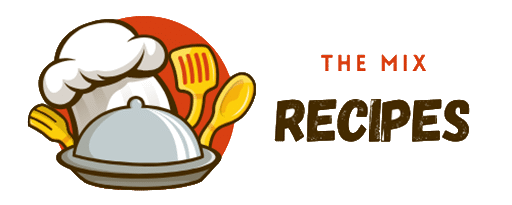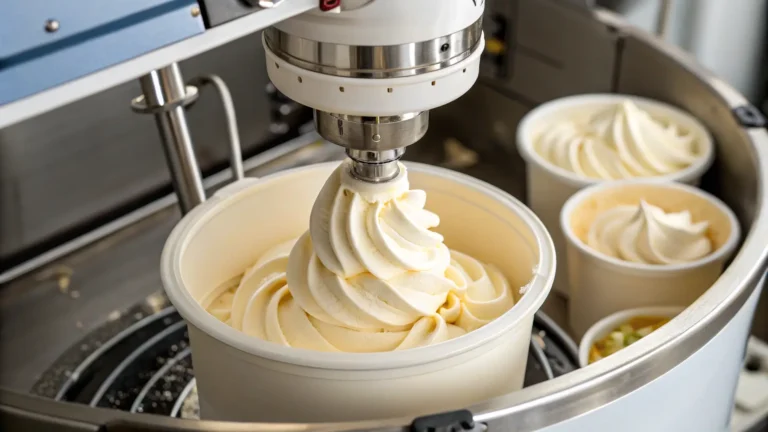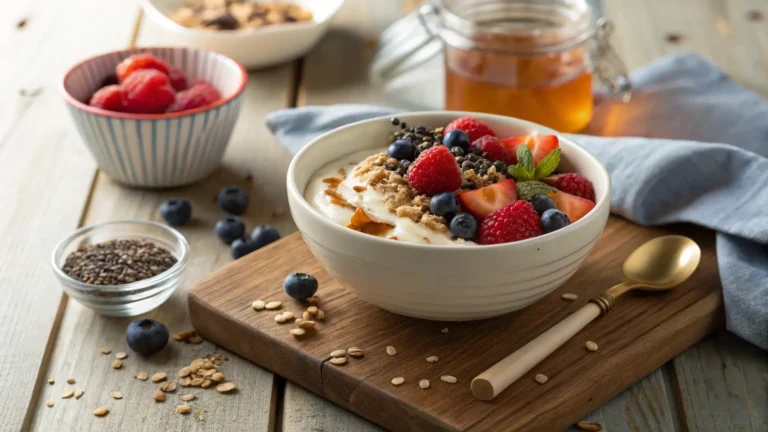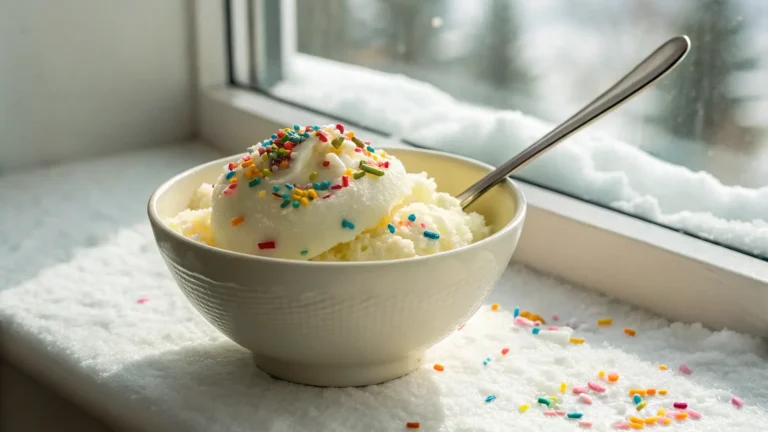Vanilla Paste Recipe
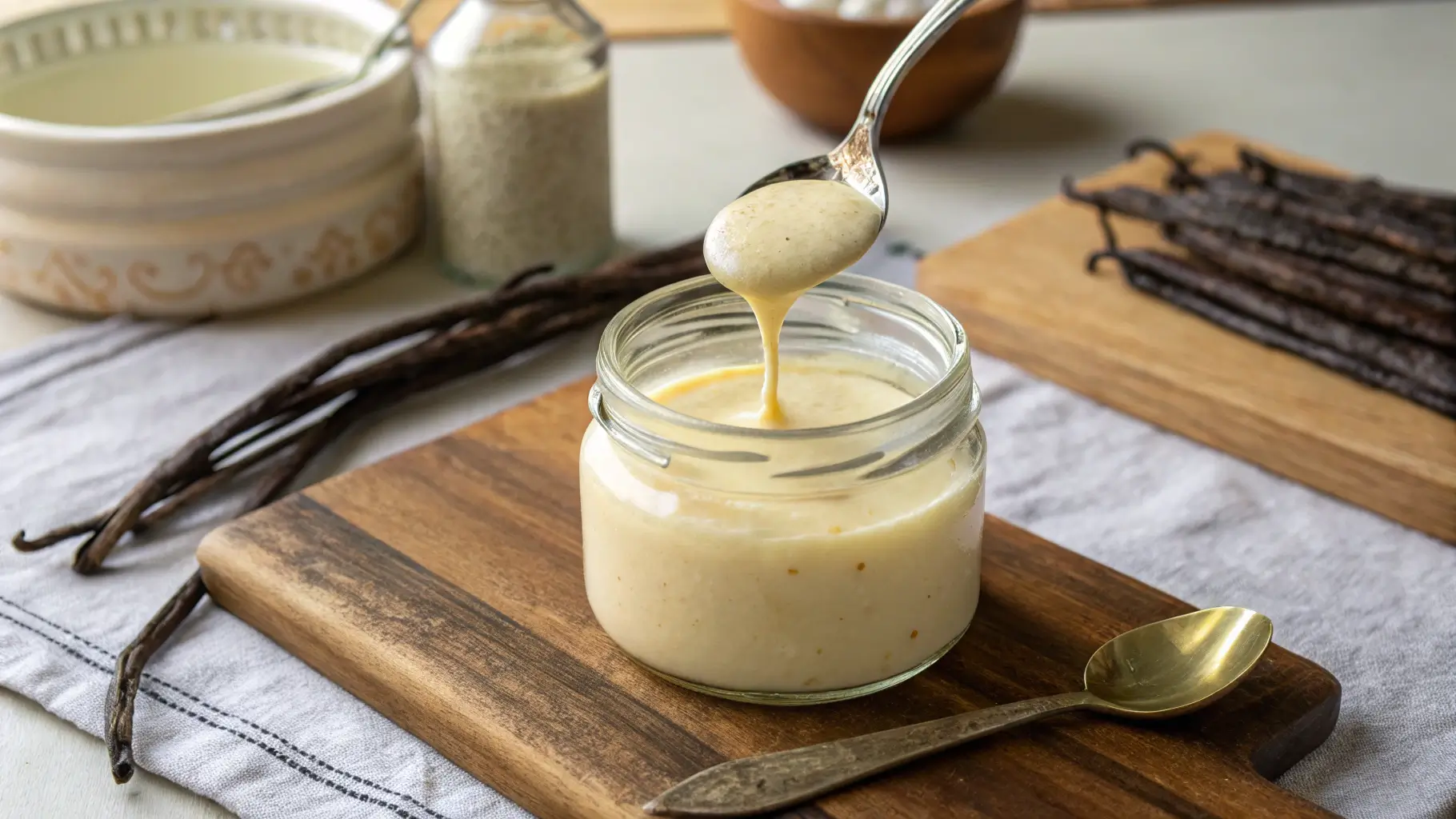
Table of Contents
If you’ve ever baked something and thought, “This needs just a little more vanilla kick,” you’re not alone. That’s where a vanilla paste recipe comes in—a powerhouse of flavor that combines the richness of whole vanilla beans with the convenience of extract. In this guide, we’re diving deep into everything you need to know about making your own vanilla paste recipe, using it in your kitchen, and getting the most out of every vanilla bean.
Whether you’re curious about substitutes, unsure whether to refrigerate it, or wondering why it’s more expensive than extract, we’ve got you covered. And if you’re browsing Trader Joe’s or Aldi for a jar, you’ll find tips on where to buy the best versions too.
Don’t miss our Best Venison Steak Recipes if you enjoy gourmet cooking with bold ingredients.
Understanding Vanilla Paste and Its Culinary Role
What is vanilla paste?
A proper vanilla paste recipe typically includes scraped vanilla bean seeds, natural extract, and a thick base like corn syrup. This gives you both intense flavor and those beautiful specks of vanilla you see in ice creams and custards. It’s a favorite among home bakers and professionals for good reason—it brings a noticeable upgrade over plain vanilla extract.
Unlike liquid extract, vanilla paste delivers more robust flavor, and its gel-like consistency makes it easier to measure without spilling. That’s why many chefs prefer crafting their own vanilla paste recipe at home for better control over taste and ingredients.
Vanilla paste vs. vanilla extract vs. vanilla beans
Still not sure whether to use paste, extract, or beans? Here’s a handy comparison:
| Product | Flavor Intensity | Visual Appeal | Ease of Use | Cost |
|---|---|---|---|---|
| Vanilla Extract | Moderate | None | Very easy | $ |
| Vanilla Paste | High | Yes (bean specks) | Easy | $$ |
| Whole Vanilla Beans | Very High | Yes (fresh beans) | Requires prep | $$$ |
- Vanilla extract works for everyday baking. It’s easy to find and budget-friendly.
- Vanilla paste, especially when made using a homemade vanilla paste recipe, enhances both taste and presentation.
- Whole vanilla beans are gourmet and expensive—but best when used fresh.
Check out this Smoked Fish Brine Recipe for another flavor-packed kitchen experiment.
How to Make Homemade Vanilla Paste
Ingredients needed for vanilla paste recipe
Crafting a homemade vanilla paste recipe is surprisingly simple and only requires a few high-quality ingredients. Here’s what you’ll need to make a small batch that packs gourmet flavor:
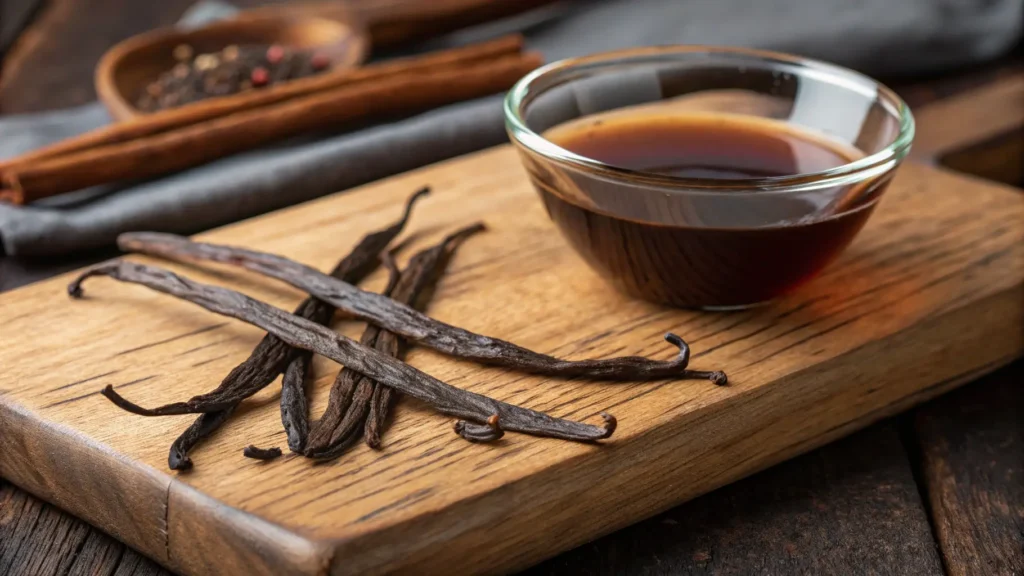
- 3 to 4 whole vanilla beans (Madagascar, Tahitian, or Bourbon are best)
- ½ cup of pure vanilla extract (alcohol-based, not imitation)
- ¼ cup light corn syrup or vegetable glycerin (for a thicker consistency)
- 1 tablespoon sugar (optional, depending on sweetness preference)
These ingredients work together to create the smooth, rich consistency and flavor you’d expect in a premium vanilla paste recipe. The key lies in the quality of the beans. Split them lengthwise and scrape out the seeds, which will become the heart of your paste.
If you’re shopping on a budget, consider buying vanilla beans in bulk or looking for grade B beans—which are more affordable but still flavorful.
Looking for inspiration? Try our Ultimate Wagyu Ground Beef Recipe if you’re into crafting recipes from scratch.
Step-by-step instructions for making vanilla bean paste at home
Here’s a simple method to bring your vanilla paste recipe to life in just a few steps:
- Prepare the beans: Slice the vanilla beans lengthwise and scrape out all the seeds with the back of your knife.
- Blend or whisk: Combine the seeds with your vanilla extract, corn syrup (or glycerin), and optional sugar in a small blender or whisk it manually in a mixing bowl.
- Simmer (optional): For a deeper infusion, simmer the mixture on low heat for 5–10 minutes. Be careful not to boil.
- Cool and store: Let the paste cool to room temperature, then transfer it to an airtight glass jar or bottle. Store in a cool, dark place.
You can double or triple this vanilla paste recipe for larger batches. It keeps well for several months if stored properly. And here’s a bonus tip: let it sit for a few days before using. The flavors get even stronger over time.
Why make your own vanilla paste recipe instead of buying it? Because homemade is not only cost-effective—it’s customizable. You control the sweetness, texture, and strength of the vanilla flavor.
Measuring and Substituting Vanilla Paste
How much vanilla paste equals vanilla extract?
One of the most common questions when following a vanilla paste recipe is: “How much do I use compared to vanilla extract?” The general conversion rule is:
1 teaspoon of vanilla paste = 1 teaspoon of vanilla extract = the seeds from 1 vanilla bean
But here’s where it gets interesting. Because vanilla paste is typically more concentrated, you may find the flavor richer—even at the same measurement. In high-end baking, especially where vanilla is the star of the show (think crème brûlée or vanilla bean cupcakes), using paste often gives a more complex, intense flavor.
You’ll also see those signature black specks in your final product—making it feel gourmet even if it’s just a batch of cookies.
Here’s a quick conversion table:
| If recipe calls for… | Use this amount of vanilla paste |
|---|---|
| 1 tsp vanilla extract | 1 tsp vanilla paste |
| 1 vanilla bean | 1 tbsp vanilla paste |
| 1 tbsp vanilla extract | 1 tbsp vanilla paste |
So, if your vanilla paste recipe is being used in place of extract, feel free to substitute 1:1 without fear. The paste may bring a slightly richer flavor and texture, but it won’t overpower.
Substitution tips: when and how to use alternatives
Let’s say you’ve run out of vanilla bean paste and your pantry’s bare—what now? No worries. There are solid substitutions, but they come with trade-offs.
Best substitutes for vanilla paste:
- Pure vanilla extract: Use the same amount as the paste, though you’ll lose the signature specks.
- Whole vanilla beans: Split and scrape 1 bean per tablespoon of paste.
- Imitation vanilla extract: Not ideal, but works in a pinch for baked goods.
- Vanilla powder: Use about ½ teaspoon powder per 1 teaspoon of paste.
If your vanilla paste recipe requires a thick consistency or strong flavor, vanilla powder or real beans will work best. Avoid imitation extract for recipes like ice cream or custards where vanilla is the hero ingredient.
When substituting, consider these factors:
- Appearance: You’ll lose the beautiful bean specks unless using real beans.
- Texture: Liquid extract may slightly thin your batter or mix.
- Flavor depth: Nothing matches the boldness of a proper vanilla paste recipe, but extract will do the job in most everyday baking.
Best Uses for Vanilla Paste in Recipes
Ideal desserts and dishes for vanilla paste
If you’ve taken the time to create a high-quality vanilla paste recipe, you’ll want to use it where it truly shines. The paste’s rich, aromatic flavor and signature black specks make it perfect for vanilla-forward desserts and elegant baked goods.
Here are the top dishes where vanilla paste takes center stage:
- Vanilla bean ice cream: You’ll love how the specks show through creamy textures.
- Buttercream frosting: A homemade vanilla paste recipe adds richness and visual appeal.
- Custards and puddings: Think crème brûlée, panna cotta, or flan.
- Shortbread cookies: The concentrated flavor balances beautifully with butter.
- Cakes and cupcakes: Especially vanilla pound cake or bean-flecked sponge.
- Pastries and scones: Add depth without overpowering other flavors.
You can also stir it into yogurt, smoothies, coffee, or cream sauces for a pop of natural vanilla flavor. Any dish where you want real vanilla bean presence, without the hassle of splitting pods, is a perfect candidate for your vanilla paste recipe.
When not to use vanilla paste
While vanilla paste is versatile, there are a few scenarios where it’s not the best fit:
- Clear glazes or icings: The black flecks may be visually distracting.
- Delicate white whipped toppings: If color clarity is key, use clear vanilla extract instead.
- Savory sauces: For example, in creamy seafood dishes, extract may integrate better.
The beauty of a vanilla paste recipe lies in its bold, authentic flavor, but when you need subtlety or visual clarity, it’s smart to switch back to extract.
Another thing to note: because paste contains a syrupy base (like corn syrup or glycerin), it can slightly alter the consistency of extremely sensitive recipes. Always test first in small batches if you’re experimenting.
Discover great ideas like Best Smoked Fish Brine Recipe if you love infusing bold flavors into classic dishes.
Benefits of Using Vanilla Bean Paste
Enhanced flavor and appearance
One of the biggest advantages of using a vanilla paste recipe—especially a homemade one—is the intensity of flavor. Unlike plain extract, which can sometimes fade in complex recipes, vanilla paste offers a full-bodied, creamy, and aromatic taste that truly lingers.
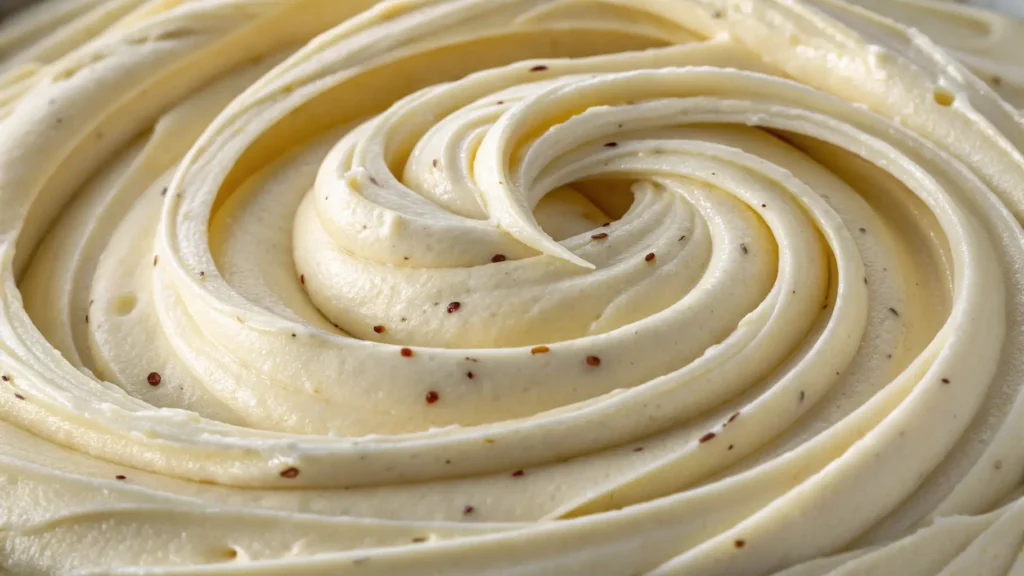
This is thanks to the presence of real vanilla bean seeds, which add not only bold flavor but also a visual elegance. Those tiny black flecks signal to everyone that you’ve used real vanilla—not the imitation kind.
Here’s why a quality vanilla paste recipe delivers so much more:
- Richer profile: Combines essence and seeds for maximum flavor impact.
- Visual luxury: Specks in your desserts look artisan and upscale.
- Versatility: Works well in both cooked and uncooked applications.
- Consistency: Provides uniform flavor without alcohol aftertaste.
When you use your own vanilla paste recipe, you can tweak sweetness, thickness, and strength to match your cooking needs. That’s something store-bought versions just can’t offer.
Shelf life and potency benefits
Another reason many bakers swear by a homemade vanilla paste recipe? It’s long-lasting and stays flavorful for months—if not longer—when stored correctly.
Because most pastes include a preservative base (like alcohol, corn syrup, or glycerin), they’re naturally resistant to spoiling. Plus, the thick texture keeps air and light from degrading the vanilla oils.
Here’s how homemade vanilla paste holds up:
- Shelf life: 6 to 12 months if stored in a sealed jar in a cool, dark place.
- Flavor retention: Tends to stay stronger than vanilla extract over time.
- No artificial preservatives: You control every ingredient.
And unlike dried-out beans or old extract that loses its kick, a fresh vanilla paste recipe delivers that rich, almost caramel-like scent every single time you open the jar.
Where to Buy Vanilla Paste in the USA
Does Trader Joe’s or Aldi carry vanilla bean paste?
If you’re not up for making your own vanilla paste recipe at home, the good news is that several major retailers carry ready-made versions. But availability can vary depending on your location and the store’s current inventory.
Let’s start with two commonly searched stores:
Trader Joe’s
Trader Joe’s occasionally stocks vanilla bean paste, especially around the holiday baking season. However, it’s not a regular shelf item, and availability differs by region. If you’re lucky, you might spot it in the spice aisle or near baking supplies. Look for a glass jar or plastic tube labeled “Vanilla Bean Paste” with visible flecks inside.
Aldi
Aldi is known for rotating specialty products, and while they don’t always carry vanilla paste, it may appear in seasonal baking specials. Check their “Aldi Finds” section, especially in November and December. Like Trader Joe’s, Aldi’s offerings are affordable, but also limited-time only.
If neither of these stores carries it when you need it, don’t worry—there are excellent alternatives.
Top recommended brands in stores and online
When you don’t have time to whip up your own vanilla paste recipe, these trusted brands offer high-quality vanilla pastes that rival homemade versions:
| Brand | Features | Available At |
|---|---|---|
| Nielsen-Massey | Gourmet quality, strong flavor | Amazon, Walmart, Whole Foods |
| Heilala Vanilla | Ethically sourced, pure ingredients | Amazon, Sprouts, Online specialty shops |
| Beanilla | Small batch, pure vanilla seeds | Beanilla.com, Amazon |
| Olivenation | Affordable, consistent quality | Olivenation.com, Amazon |
These brands are widely available online with customer reviews and shipping options. While they may cost a bit more than extract, they offer a quality close to your personal vanilla paste recipe—minus the prep time.
Don’t miss our Ultimate Wagyu Ground Beef Recipe if you enjoy elevating everyday meals with premium ingredients.
Is Vanilla Paste Worth the Cost?
Why is vanilla paste expensive?
If you’ve looked at prices in-store or online, you’ve probably noticed that a tiny jar of vanilla paste can cost three to five times more than regular extract. So why is this rich, fragrant product such a luxury?
Here’s why a store-bought vanilla paste recipe carries a hefty price tag:
- Vanilla beans are rare and labor-intensive:
Vanilla is the second-most expensive spice in the world after saffron. Each bean must be hand-pollinated, harvested, cured, and aged—a process that takes months. - High-quality extract and seeds:
Most vanilla pastes include both pure vanilla extract and real vanilla bean seeds, making the blend more potent and costly. - Sourcing and ethics:
Many brands prioritize sustainably farmed beans from Madagascar, Tahiti, or Uganda, and that ethical sourcing adds to the price—but also ensures fair wages and quality farming. - Shelf-stable packaging:
Glass jars, BPA-free tubes, and long-life containers cost more but help preserve flavor and freshness—especially important in a quality vanilla paste recipe.
Cost comparison with other vanilla products
So is it worth paying more for paste instead of extract or beans? Let’s break it down:
| Product | Price Range (USD) | Uses per oz | Flavor Strength | Value |
|---|---|---|---|---|
| Vanilla Extract | $4–$12 per bottle | 30–40 tsp | Moderate | ⭐⭐⭐ |
| Vanilla Bean Paste | $12–$25 per jar | 25–35 tsp | Strong | ⭐⭐⭐⭐ |
| Whole Vanilla Beans | $5–$8 per bean | 1–2 uses | Very Strong | ⭐⭐⭐ |
While whole beans provide unmatched flavor, they’re less convenient. And extract, though affordable, lacks the visual appeal and depth of a good vanilla paste recipe. Paste offers a great middle ground—high impact, easier use, and a longer shelf life than beans.
So yes, vanilla paste costs more upfront, but if flavor and appearance matter to your baking (or you’re trying to impress with those elegant flecks), it’s definitely worth it.
Storage & Handling of Vanilla Paste
Do you refrigerate vanilla paste?
A common question after making a homemade vanilla paste recipe or purchasing a jar is: Should I keep it in the fridge? The short answer is no—in most cases, refrigeration is not necessary and may even alter the consistency over time.
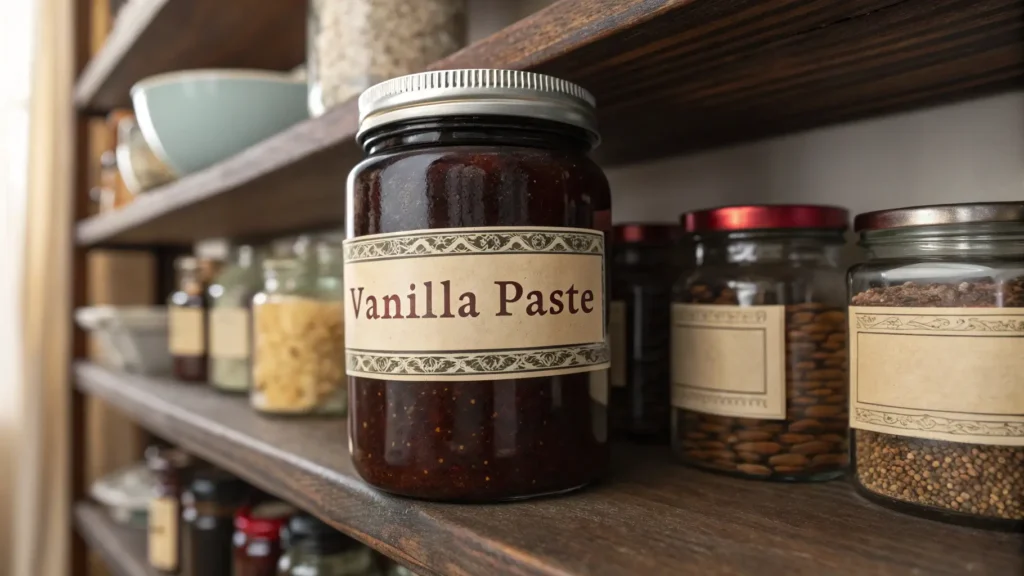
Vanilla paste is typically made with:
- Alcohol-based extract or
- Thick syrups like glycerin or corn syrup
These ingredients act as natural preservatives, which means your paste is safe at room temperature, provided it’s stored properly.
Here’s what you should do instead:
- Store it in a dark glass jar or BPA-free airtight container
- Keep it in a cool, dark cabinet, away from direct sunlight
- Avoid areas that get too warm, like near your stove or oven
Even with a homemade vanilla paste recipe, you’ll get the longest shelf life this way. Refrigeration can cause crystallization or thickening, making the paste harder to use.
Tips to extend shelf life
Want to make sure your homemade or store-bought vanilla paste recipe stays potent for as long as possible? Follow these practical tips:
- Always use a clean, dry spoon to scoop—moisture can cause mold or bacteria.
- Seal tightly after each use to prevent air exposure.
- Label your jar with the date made or purchased.
- Shake or stir gently before using if you notice separation or settling.
On average:
- Store-bought vanilla paste lasts up to 12–18 months
- Homemade vanilla paste (depending on ingredients) lasts 6–12 months
The good news? You’ll likely use it up much faster once you discover how versatile your vanilla paste recipe really is—from baking to drinks and more.
Conclusion: Elevate Your Baking with a Vanilla Paste Recipe
Whether you buy it from a premium brand or make your own vanilla paste recipe, one thing’s certain—it transforms ordinary desserts into extraordinary ones. From the rich aroma to the visual elegance of vanilla specks, this ingredient brings authenticity and depth to everything it touches.
Ready to experiment in your kitchen? Start with our simple homemade vanilla paste recipe and elevate your baking game today.
Discover great ideas like Venison Steak Recipes to continue your culinary adventures.
FAQs About Vanilla Paste Recipe
How is vanilla paste made?
Vanilla paste is made by combining vanilla bean seeds, pure vanilla extract, and a thickening agent like corn syrup or glycerin. The seeds are scraped from whole vanilla pods, then blended with extract and syrup to form a thick, aromatic mixture. A proper vanilla paste recipe results in a spoonable blend packed with flavor and those signature vanilla specks.
How much vanilla bean paste is equal to 1 tsp vanilla extract?
The standard conversion is 1:1. That means 1 teaspoon of vanilla bean paste = 1 teaspoon of vanilla extract. However, due to its concentrated nature, vanilla paste may offer a bolder flavor, especially in recipes like frostings, ice creams, and puddings. If your vanilla paste recipe is particularly strong, you can start with a slightly smaller amount and adjust to taste.
What is a substitute for vanilla paste?
If you don’t have paste on hand, these substitutes will work:
Vanilla extract – Use in equal amounts, though without the specks.
Vanilla powder – Half the amount of paste is typically enough.
Whole vanilla bean – One scraped bean equals 1 tablespoon of paste.
Just remember, a homemade or store-bought vanilla paste recipe brings a depth and visual appeal that these substitutes often lack.
How do I use vanilla paste?
Use it exactly as you would vanilla extract—in cakes, cookies, custards, frostings, ice cream, and more. The best part? Your desserts will feature beautiful black flecks of vanilla bean that scream gourmet. A quality vanilla paste recipe adds both flavor and elegance to your creations.
Which is better, vanilla extract or vanilla paste?
It depends on the use. For bold vanilla flavor and a premium appearance, vanilla paste is the winner. It works best in recipes where vanilla is the star. Extract, on the other hand, is more affordable and ideal for quick bakes. But if you follow a homemade vanilla paste recipe, you’ll find it outperforms extract in flavor and intensity.
Does Trader Joe’s sell vanilla bean paste?
Trader Joe’s does occasionally carry vanilla bean paste, but it’s not available year-round. Keep an eye on their seasonal baking section. If you’re out of luck, making your own vanilla paste recipe ensures you’ll never run out—and lets you customize strength and sweetness.
Is vanilla bean paste worth it?
Absolutely. While it’s more expensive than extract, the flavor payoff and visual quality make it well worth the cost—especially if you bake frequently. A well-made vanilla paste recipe lasts for months, elevates basic recipes, and adds sophistication to desserts.
Does Aldi sell vanilla bean paste?
Aldi occasionally features vanilla paste during the holiday baking season in their limited-time Aldi Finds. Availability varies by region. For guaranteed access, you can make your own using a simple vanilla paste recipe with just beans, extract, and a syrup base.
Do you refrigerate vanilla bean paste?
Nope. Refrigeration is not necessary for vanilla paste. In fact, it may thicken or separate if chilled. Keep your vanilla paste recipe in a cool, dark cupboard in an airtight container for maximum shelf life.
Why is vanilla paste so expensive?
The price comes from the labor-intensive process of growing and curing vanilla beans, combined with the cost of pure extract and packaging. Still, with a homemade vanilla paste recipe, you can save money over time while controlling quality and flavor.
Have you given our recipe a try?
There are no reviews yet. Be the first one to write one.
